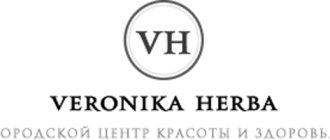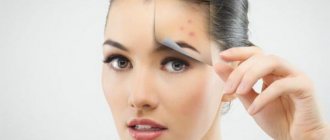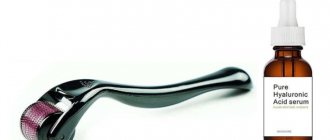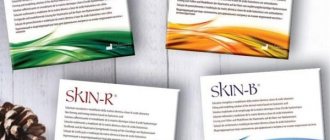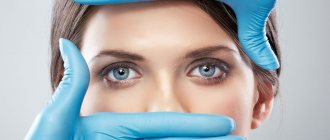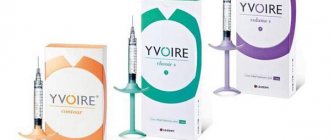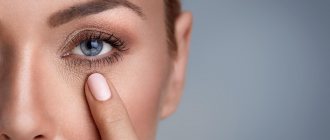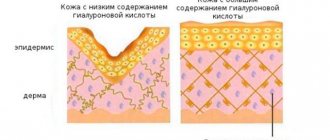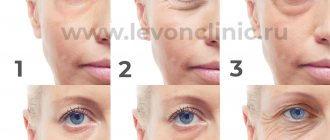Why do bruises appear on the face after biorevitalization?
In fact, this is the body’s natural reaction to any injection.
The fact is that when injecting drugs under the skin, the sharp edge of the needle cuts small vessels (lymphatic, blood) located in the soft tissues. If their integrity is violated, interstitial bleeding begins. Blood flows out of the vessel, permeates the subcutaneous fatty tissue, and a bruise forms.27 The administered drugs themselves can also have an irritating effect, especially if they have high alkaline, acidic, or osmotic activity. In most cases, the physicochemical aggressiveness of drugs is associated with a high total concentration of ingredients.28
But this is not the only reason why bruises after biorevitalization appear in the area of injection of hyaluronic acid. The risk of hematomas increases significantly in patients with fragile blood vessels located close to the surface of the skin, as well as in people with problems with blood clotting. Taking anticoagulants, painkillers, and even regular aspirin can provoke the appearance of hematomas after the injection procedure. The specialist must warn the patient about these risks before the procedure.26
Recovery after mesotherapy around the eyes
Although mesotherapy is the most gentle procedure, its implementation is still associated with minor damage to the skin. As a result of such external intervention, the epidermis partially loses its barrier functions. Until complete recovery, special attention to the skin and proper care are required.
To consolidate the effect, you must follow a number of simple but important recommendations:
- Avoid direct exposure to ultraviolet rays, temporarily avoid visiting beaches and solariums;
- When going outside on sunny days, you should protect your skin and use products with SPF protection (consult your doctor first);
- Temporarily stop drinking alcohol;
- Do not take a hot bath, do not visit baths or saunas;
- It is recommended not to use decorative cosmetics.
These recommendations remain relevant throughout the course of mesotherapy around the eyes and for 1-2 weeks after its completion. The patient receives more detailed information from his cosmetologist on an individual basis.
How to quickly remove bruises after biorevitalization?
Treatment of hematomas is usually carried out using conservative methods. But not all bruises can be removed quickly; sometimes healing takes up to several weeks.22
To speed up the process of resorption of hematomas after biorevitalization and other injection procedures, you can use Venolife gel. It has antiexudative and anticoagulant properties. Thanks to its multicomponent composition, the drug has a complex effect9:
- reduces the permeability of blood vessels, normalizes their trophism, strengthens the walls (thanks to troxerutin);
- stimulates metabolic and regenerative processes in the skin (due to dexpanthenol);
- relieves inflammation, reduces the activity of the blood coagulation system (thanks to heparin).
The use of Venolife gel helps remove bruises after biorevitalization, mesotherapy, thread lifting and other procedures involving injections. But the duration of treatment is determined based on the individual characteristics of the body. Before using the drug, it is advisable to consult a specialist.9
When considering possible complications after mesotherapy, it is necessary to understand one point - mesotherapy is a medical technique, not “magic” and, of course, like after any inadequate or unprofessional drug treatment, side effects and complications may occur after this cosmetic procedure. Most often, complications after this cosmetic procedure are associated with mechanical damage to the skin and the technique of the session (nonspecific) or with an allergic reaction of the patient’s body to the administered medicinal components of the mesococktail (specific). Mesotherapy – complications of a nonspecific nature: Pain. The pain and discomfort that the patient experiences during the meso-session are associated with irritation of the nociceptors when the needle is inserted under the skin. To eliminate such complications, the patient is given local anesthesia of the treated area before the procedure. It should also be taken into account that the thinner the needle and the shorter the time intervals between skin punctures, the calmer the skin reacts to injections and the less the person experiences uncomfortable pain.
Mesotherapy, complications after which manifest themselves in the form of microhematomas and petechiae, is a completely unprofessional procedure. Extensive hematomas, bruises, and hemorrhages on the face after a meso-session can only be associated with excessively deep subcutaneous injection of meso-preparations. Erythema is a rapidly developing redness in the injection area. Often, this manifestation is considered an absolute norm, which should not cause concern. But, only if the erythema goes away within 20-25 minutes after the end of the meso-session. Otherwise, if redness on the skin remains for a longer time or appears only a few days after the procedure, this may indicate the development of necrosis or an infectious allergy.
Complications after mesotherapy of a specific nature: Skin necrosis is the most dangerous type of possible complication after a mesotherapy session, directly related to medical negligence and inattention. Skin necrosis appears on the skin in the form of reddened, inflamed tubercles with purulent contents, which tend to grow quickly. The result of necrosis is scars and scars on the skin. The causes of necrosis are poor disinfection of the skin and instruments that come into contact with the skin, incorrectly calculated depth and volume of administered mesopreparations, inadequate and undisciplined post-care after the procedure, and violation of recommendations by the patient.
Allergic skin reactions, which are of two types: anaphylactic (immediate) and delayed. In the first case, during or immediately after the end of the meso-session, the patient experiences swelling on the face and itchy blisters in the injection area. A delayed allergic reaction to mesotherapy manifests itself a few days after the session in the form of allergic dermatitis, during which persistent redness occurs with possible inflamed, weeping lesions in the areas of the skin treated with mesotherapy. In order to anticipate possible harm from mesotherapy, as well as to eliminate complications after mesotherapy, both the patient and the cosmetologist must follow certain tactics even before the start of the mesotherapy session.
Preliminary preparation for mesotherapy
The patient, making a positive decision in favor of mesotherapy, must take into account the fact that the harm of mesotherapy is directly related to contraindications to this procedure. Undesirable complications after a meso-session may arise if the patient has: skin diseases, especially in the area of intended administration of meso-cocktails, manifestations of herpes, allergic reactions, cardiovascular diseases (hypertension, ischemia), cholelithiasis. Women should also be aware that most meso-cocktails contain hormonal drugs that can cause complications after mesotherapy. Therefore, during menstruation, pregnancy and lactation, when the hormonal background of the female body has a special structure, it is not recommended to undergo meso-sessions.
In turn, a mesotherapist or qualified cosmetologist, in order to exclude complications after mesotherapy, must draw up a patient’s medical history, which should include the following information: Whether the woman and her relatives have a predisposition to allergic manifestations. Previously performed cosmetic and physiotherapeutic procedures and the reaction of the skin to them. Episodes of allergic reactions to food, cosmetics and medications. If the patient excludes the presence of various types of allergies, then the professional must still make sure that the patient’s skin and body do not react to the selected composition of the meso-cocktail, and conduct a preliminary allergy test.
Of course, it is impossible to completely eliminate the possible harm of mesotherapy, but an adequate and professional approach to this procedure can minimize the likelihood of side effects.
Mesotherapy and alcohol
This ratio of words is included in a separate heading for a reason, because mesotherapy and alcohol are absolutely incompatible. This is due to the fact that even a glass of light wine or champagne consumed by a woman a few days before or after the procedure completely neutralizes the effect of mesopreparations, and the effectiveness of the procedure is reduced to zero. It should also be understood that mesococktails consist of medicinal components, which, when entering the cells of the dermis and mesoderm, are absorbed into the blood. And, as you know, the interaction of alcohol and drugs in any treatment can even lead to fatal consequences. Therefore, so that the harm of mesotherapy on the body does not have such a global nature, it is not recommended to drink alcohol for 5-7 days before and after the meso-session.
So, against the background of the above information, we can conclude that there is no clear answer to the question of whether mesotherapy is dangerous and what is its harm to the woman’s body, because All complications after mesotherapy are of a purely individual nature. One thing can be said with confidence, having really weighed all the pros and cons, and having made a decision in favor of mesotherapy, every woman should take the choice of a beauty salon or cosmetology center very carefully and seriously. The level of skill and professionalism of a cosmetologist or mesotherapist is the key to ensuring that the mesotherapy procedure will be a beneficial and complication-free treatment process for you.
CONTRAINDICATIONS
- Allergic reactions to the chosen treatment.
- Incoagulability of blood.
- Damage to eyelid tissue, inflammation in the treatment area.
- Skin diseases.
- Infectious processes.
- Oncological diseases.
- Epilepsy.
- Pregnancy and breastfeeding.
Please note that the treatment of circles under the eyes caused by diseases of internal organs requires an integrated approach with non-cosmetology specialists (endocrinologist, urologist, gastroenterologist).
TREATMENT METHODS, DRUGS AND EQUIPMENT
Treatment of even large bruises and circles under the eyes is not a problem today. GMTClinic has a number of effective techniques that solve the issue from different angles.
Mesotherapy and biorevitalization
Mesotherapy for bruises and circles under the eyes is very effective and very popular.
Injections for circles under the eyes work comprehensively, moisturizing and restoring the elasticity of the skin of the lower eyelids, removing fine wrinkles, stimulating cell renewal, protecting against photoaging and saturating the skin with essential elements. Doctors at our clinic work with an extensive pool of injectable drugs: NCTF mesococktail, Mesoxanthin, Mesowharton, Mesoeye.
Eliminating circles under the eyes with injections of the drug Mesoai is one of the most effective methods in modern invasive cosmetology. The main strength and difference of the drug is a complex of peptides with a synergistic effect. The result of their work is a systemic effect on the periorbital zone: the outflow of blood and lymph is normalized, blood vessels are strengthened, cellular respiration is restored - as a result, swelling is eliminated (this allows us to recommend Mesoai as a restorative measure after blepharoplasty); the production of collagen and elastin in cells increases; dark circles, bags and fine wrinkles disappear.
The Mesoai procedure can be performed in any season, it does not require preparation, and rehabilitation is minimal.
Plasma therapy
Plasma therapy is one of the most physiological, safe and effective invasive techniques for eliminating skin imperfections, since the patient’s own blood plasma is used to create the drug. For the same reason, plasma therapy is suitable for patients for whom mesotherapy and biorevitalization are contraindicated. The results of the method are obvious after the first procedure, and for maximum effect, a course of 2-4 procedures is prescribed with a break of a month.
The RegenLab plasma therapy technique uses a special technology for obtaining and processing plasma. In the blood collection procedure, three different colored tubes with different fillings can be used in various combinations or separately, depending on the desired result. In the case of circles under the eyes, you will need blue and red. With their help, platelet-rich plasma and high molecular weight protein gel (plasmogel) are obtained.
Possibilities: stimulation of collagen production, launching the process of angiogenesis (creation of new blood vessels), which leads to restoration of skin elasticity and freshness, eliminates age spots and signs of fatigue.
Contour plastic
Fillers for under-eye circles are effective in cases where the blood vessels in the lower eyelid area are located close to the surface of the skin or there is a deep nasolacrimal groove. With the help of contour plastic surgery, the volume of the soft tissues of the face is replenished, and the production of one’s own collagen, elastin and hyaluronic acid is stimulated.
GMTClinic uses, among other things, plasma gel Endoret Gel for contouring, on the basis of which an individual injection cocktail is created from the patient’s own plasma. The patented formula allows the drug to rejuvenate the skin at the cellular level in the most natural way possible.
Possibilities: filling in too deep nasolacrimal grooves, forming a framework of renewed connective tissue and overall freshness of the skin by activating the production of elastin, collagen and hyaluronic acid.
Hardware cosmetology
Modern cosmetology knows how to remove dark circles under the eyes without resorting to invasive procedures. To help solve this problem:
- laser devices Quanta System Duetto, MedioStar Next;
- devices with photo technology Elos, Sciton BBL, M22;
- laser resurfacing Fraxel, Sciton Halo, MultiPulse CO2 and Dermablate MCL-31;
- rf-lifting Thermage (has a special attachment for the periorbital zone);
- microcurrent therapy that improves blood circulation and eliminates blue discoloration.
